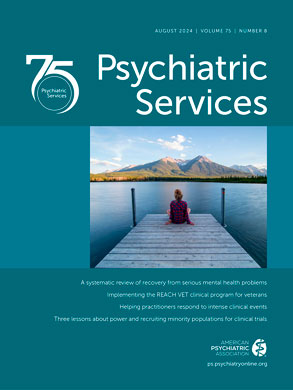Many books have been written on the topic of disaster mental health in recent years. Two books—Trauma and Disaster: Response and Management and Terrorism and Disaster: Individual and Community Mental Health Interventions—make a fine introduction to anyone who is new to the field of disaster mental health. These two complementary books focus on the role of psychiatry, but other mental health clinicians working in disaster contexts will find them to be very valuable resources.
The editors of both books are renowned experts in the field of disaster psychiatry. They have brought together a broad international group of contributors, including Carol North, Lars Weisaeth, Arieh Shalev, Simon Wessely, Beverly Raphael, and many others, comprising a significant pool of expertise in the field of disaster psychiatry.
Trauma and Disaster: Response and Management provides an easy and very readable introduction to disaster psychiatry. It is organized nicely into five chapters that provide a brief introduction to the field of disaster psychiatry. The book begins with a brief summary of the basic biological principles of posttraumatic stress disorder (PTSD). This is followed by coverage of the epidemiology of disaster psychiatry, including an outline of general disaster trauma theory, the course of disaster mental health responses, at-risk populations, and future directions for postdisaster interventions. The special issues faced by children during disasters are illustrated in the context of the events of September 11, 2001. What is unique about this chapter is that it highlights not only issues that are specific to children but also many other general disaster response issues that can indirectly have tremendous implications for children's psychiatric outcomes after a disaster.
In another chapter, early interventions for trauma-related problems are outlined by the faculty from the National Center for PTSD. This chapter briefly discusses the pros and cons of various interventions, including debriefing, cognitive-behavioral therapy, eye movement desensitization and reprocessing, and pharmacotherapy. The interventions identified represent the summary of findings from a National Institute of Mental Health consensus panel of evidence-based practices for mass violence (
1). Finally, special issues and challenges related to terrorism involving weapons of mass destruction are identified, including the unique role of psychiatrists in response to these horrific events.
The second book,
Terrorism and Disaster: Individual and Community Mental Health Interventions, provides a more in-depth discussion of many of the issues identified in the first book. It emphasizes the increasingly important concept of examining disaster mental health care from a public health perspective, as outlined in the Institute of Medicine report (
2), that the effects and experience of disasters are not only individually based but also collectively based, in communities. In addition, this book highlights how disaster affects behavior as well as the role of disaster psychiatry in influencing many of those behaviors.
This book, like the first, is organized into distinct sections. After a brief introduction reiterating the premises behind disaster mental health interventions, the book illustrates those premises with examples from various disaster and trauma responses, including September 11, the conflict in Mozambique and its effects on children, the Oklahoma City bombing, and the USS Cole bombing. These examples reinforce the appreciation of the hierarchy of disaster responses and highlight how disaster processes, which have been characterized elsewhere as the "disaster after the disaster," can influence psychiatric outcomes. Ambassador Prudence Bushnell's chapter on the Kenyan embassy bombing nicely describes how postdisaster feelings, although often not pathological, can have tremendous psychosocial implications if inadequately addressed. In her summary paragraph, Bushnell lays down principles of postdisaster interventions that are essential in disaster mental health.
The next section expands on the issues of interventions in disaster, with further review and discussion of various types of interventions, including debriefing and its positive and negative implications for the recovery and resilience of individuals affected by disasters. This section also describes systemic interventions such as the role of consultation liaison psychiatry, including a unique description of collaboration between mental health and surgical patients from trauma services as an early intervention for mass casualty events. In another chapter, Simon Wessely presents an interesting examination of the evidence for and against the role of screening for the prevention of psychological disorders from major trauma.
The last section of the book examines more closely the increasing effects of the threat of contamination in terrorism by using examples of technological disasters, including the Chernobyl nuclear disaster, the Kitzsteinhorn railway disaster in the Austrian Alps, and the accident at the nuclear power plant at Three Mile Island. The greater collaborative role of mental health and public health and the concept of how disaster influences behaviors from a public health perspective are further elaborated in the chapter by Lars Weisaeth and Arnfinn Tonnessen. Citing examples from past technological disasters, these authors also raise the interesting notion that although humans have developed coping strategies for natural disasters through the evolutionary process, the new technologies that are now helping us to mitigate and deal with natural disasters may in themselves present a new set of unknown risks that we now have to confront. Two other chapters of note are the ones addressing the psychiatric issues surrounding relocation and the role of body handling by disaster response workers.
An added bonus with the second book is the accompanying CD-ROM based on a conference by the Center for Study of Traumatic Stress that essentially summarizes and reinforces the many points raised in the book itself. The CD-ROM consists of three PowerPoint presentations of about 50 minutes' duration that address psychiatric responses in disasters, psychological debriefing, and working within the federal response in disasters.
I was impressed with the readability of both books. Each is nicely organized and comprehensive. Trauma and Disaster: Response and Management is an excellent introduction to the field of disaster psychiatry, and Terrorism and Disaster: Individual and Community Mental Health Interventions can be used as a companion text to provide the reader with a greater depth of understanding. The books will be a useful foundation for anyone, psychiatrists and nonpsychiatrists alike, working in the rapidly evolving field of disaster psychiatry.

